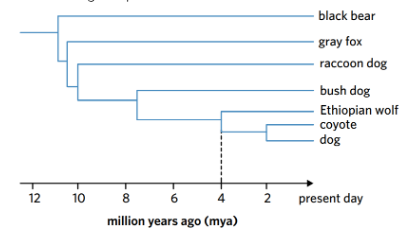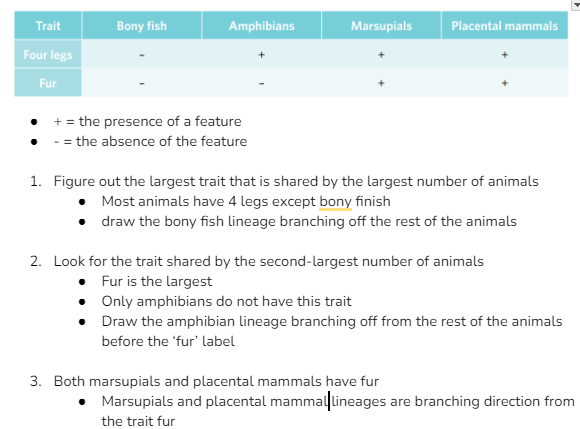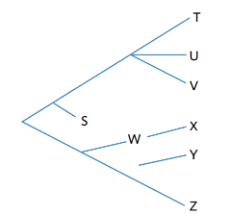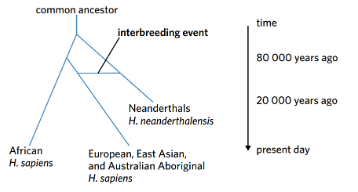KK8 - phylogenetic trees
1/5
There's no tags or description
Looks like no tags are added yet.
Name | Mastery | Learn | Test | Matching | Spaced |
|---|
No study sessions yet.
6 Terms
Phylogenetic tree
A diagram that shows the evolutionary relationships between different species
Describes the organism’s relationships to other organisms both past and present
Illustrates evolutionary relationships between species
Can be useful in displaying
The timeline of lineages
Relatedness between taxa
Shared characteristics of different taxa
Structure of phylogenetic tree
Root - A line at the origin, representing the earliest common ancestor
Branch - Each line on the phylogenetic tree
Node - A point where the branches split from each other, representing a divergence between those two taxa
Leaf - The end of a branch, representing where the present-day or extinct species are found. They are labelled with the species or taxa name

Interpreting phylogenetic trees
Can be read backwards to determine the most closely related species to a taxon
May include a time scale to show the time points of divergence events
Branch length represents time

Constructing phylogenetic trees

Uncertainties in phylogenetic trees
Dating techniques are not always accurate and fossils are not typically perfectly preserved
Can be expressed using phylogenetic trees
Lack of node between Y and Z means that the divergence point is unknown
Break between W and X means that W is possibly an ancestor of X but there is no evidence of transitional fossil between the two species
Branch with species S does not reach the end of the tree, indicating it is extinct
Nodes usually split into two lineages but can be split into three or more
Means that it is unclear which species diverged from the others first
Occurs if there is insufficient data or if two speciation events occurred closely together (like adaptive radiation)

Exchanging genetic material between groups
Genetic material is passed between groups after they have diverged
Depicted using a line between branches
